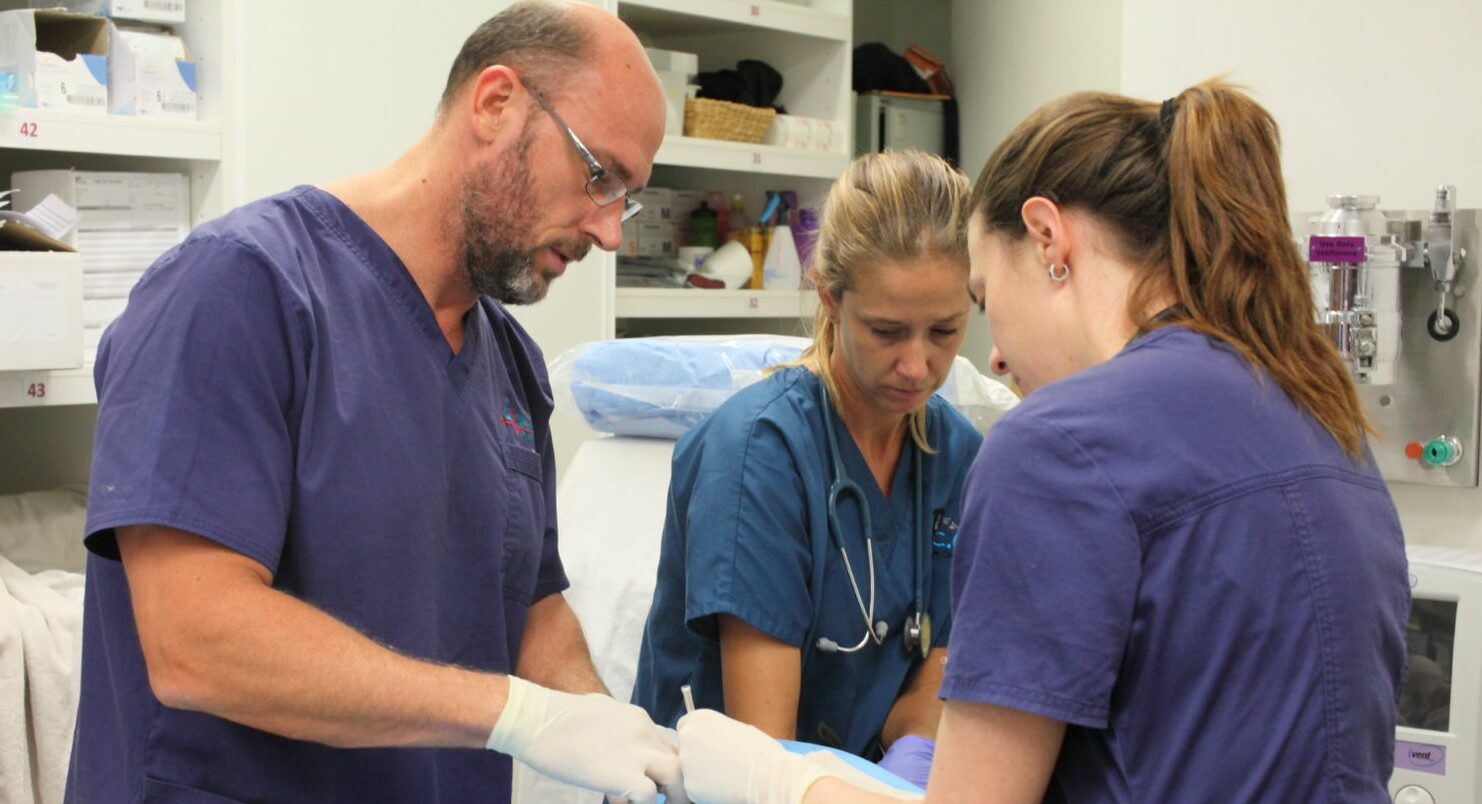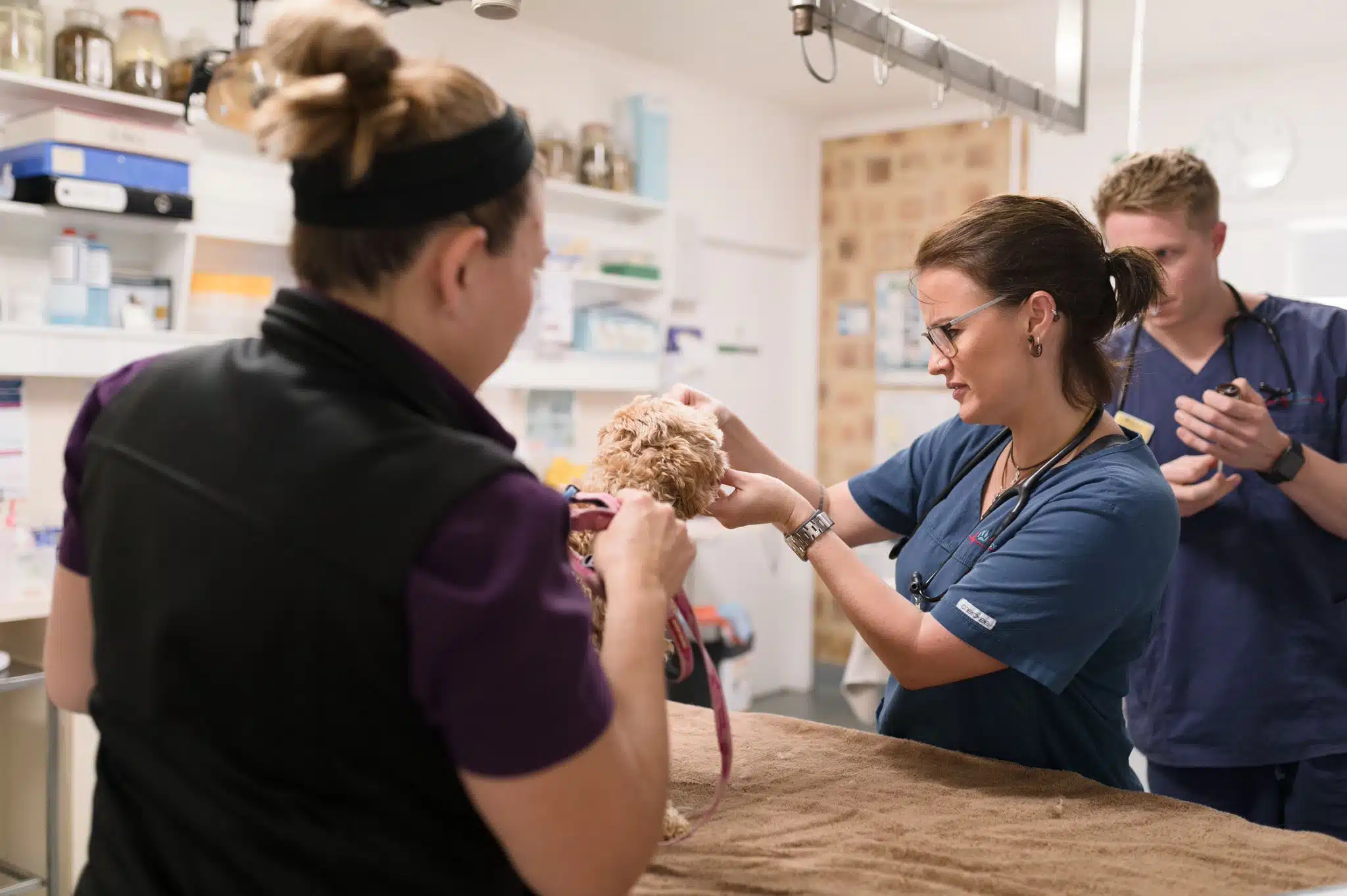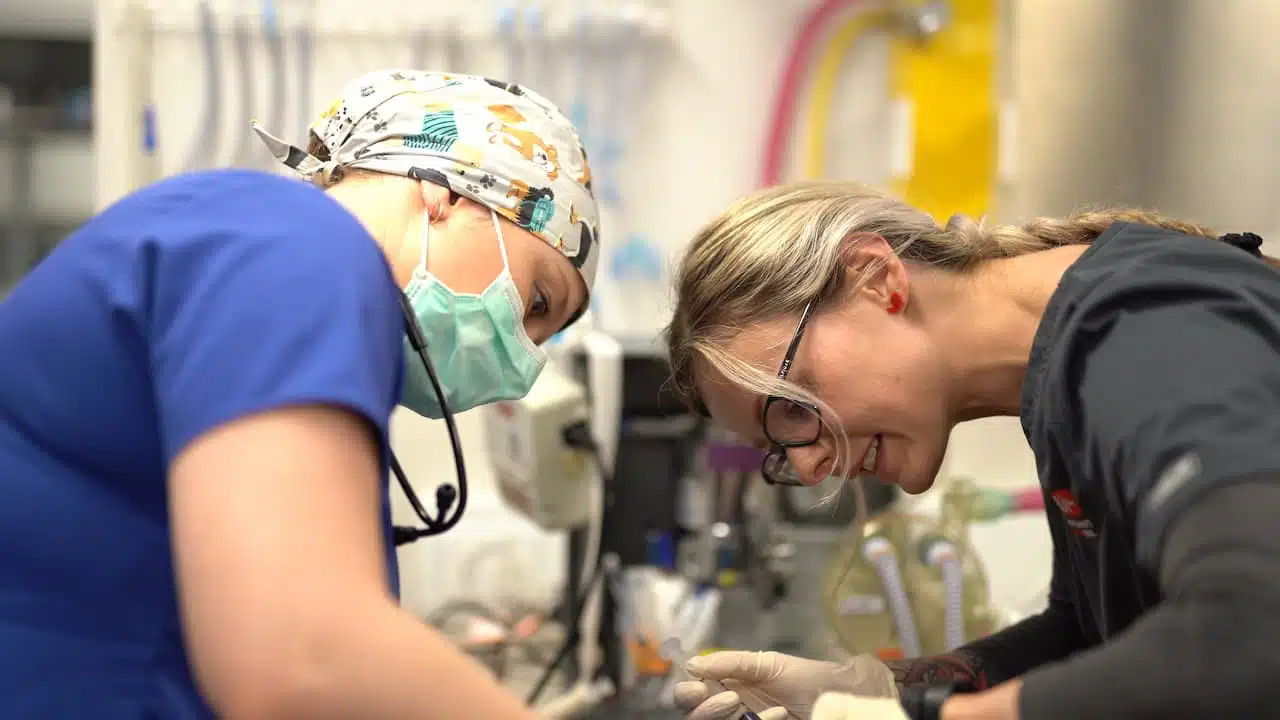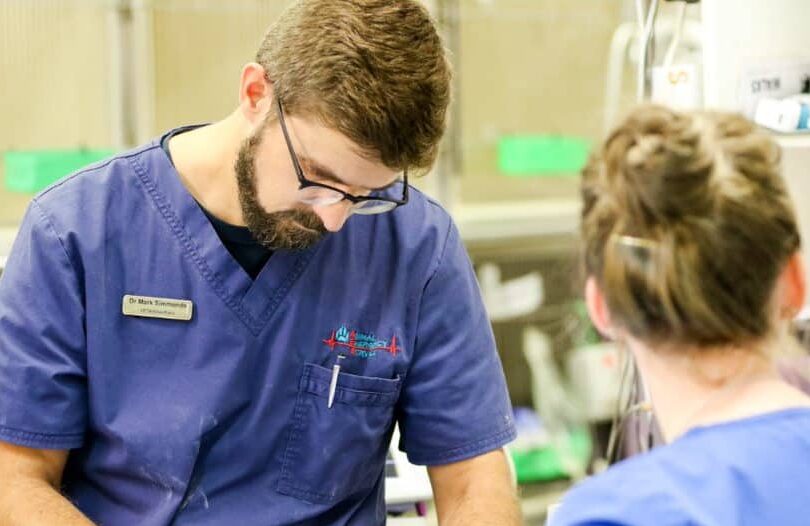In the fast-paced environment of the emergency vet hospital, the urgency of delivering swift care to critically ill patients demands a level of teamwork and coordination that is second to none. The intricate challenges that come with every complex case demand a cohesive and collaborative approach, one that seamlessly melds the expertise of diverse veterinary professionals, seasoned nurses and technicians, and dedicated support staff.
In this article, we’ll delve into the significance of adopting a collaborative approach within the multifaceted landscape of emergency veterinary hospitals. Each step will emphasise how this collaborative approach is the cornerstone of enhanced patient care, improved emergency triage and clinical outcomes, and a stronger, more genuine bond with the broader veterinary community.
For any of you who have worked in an emergency vet hospital, you’ll know that as the doors hospital swing open and a patient is carried in, this can often mark the beginning of a race against time. These patients, often teetering on the precipice of life, require a swift yet well-coordinated response. It is precisely in these high-stress situations that the interconnected nature of distinct veterinary professionals takes centre stage.
The coordination of veterinarians, specialists, technicians, nurses, and ancillary team members becomes an intricate choreography of skill, knowledge, and compassion. By seamlessly weaving together their skills, the end result is a precise diagnosis, optimal treatment, and ideal standard of holistic care. But how can we achieve this? Read below to find out.

The Power of Synergy in the Emergency Vet Hospital
Within the frenetic symphony of an emergency veterinary hospital, taking advantage of collaborative synergy orchestrates the triumph of care over chaos. These mutually beneficial skill sets yield benefits far beyond the consult room or treatment area. So what exactly are the benefits of focusing on a synergistic approach?
Decisive Decision-Making: The effective exchange of insights and perspectives among specialists culminates in well-informed and agile decision-making. Swiftly prioritizing cases, charting the course of action, and recalibrating as circumstances evolve—these facets find their roots in collaborative discussions that embrace the diverse viewpoints of the care team.
Precision in Diagnosis: The contribution of specialists from distinct disciplines fosters precision in diagnosis. A patient’s symptoms may transcend traditional boundaries, necessitating the amalgamation of expertise from internal medicine, radiology, surgery, and more, culminating in a comprehensive and accurate diagnosis.
Tailored Treatment Strategies: In the realm of emergency care, one size does not fit all. The collective wisdom of a multidisciplinary team curates personalized treatment strategies that account for the intricacies of each patient’s condition. This holistic approach paints a canvas where all facets of care—from immediate intervention to long-term recovery—are harmoniously woven.
The Spectrum of Holistic Care: Beyond clinical needs lies the emotional, psychological, and logistical aspects of patient care. A collaborative approach recognizes and addresses the multidimensional needs of patients and their owners too, underscoring the hospital’s commitment to holistic well-being.

Achieving Harmony Through Communication
At the heart of collaboration lies effective communication—a bridge that connects minds, is able to overcome gaps in skills, and enhances our abilities to provide ideal patient care in any situation. Active listening, clarity in conveying information, and fostering an environment where diverse insights thrive all contribute to a harmonious exchange of knowledge.
In an emergency veterinary hospital, where each passing moment can tip the scales between recovery and the unknown, timely communication can be the deciding factor in saving a patient. An effective emergency vet team will know how to communicate with one another clearly and respectfully even in tense situations.
Embracing the Roles and Responsibilities of an Emergency Vet Hospital
The dynamic within an emergency veterinary hospital mirrors a finely tuned machine, with each cog playing a distinct role. Every role is equally important as each other in ensuring that the hospital can continue to operate smoothly. This includes:
Veterinarians: As the core of patient care and clinical case management, it’s often up to veterinarians orchestrate the symphony. Their expertise in critical care and clinical judgment is the compass that guides the path to recovery, but requires the input of the rest of the team to function smoothly.
Specialists: Experts in specialized fields—whether surgery, cardiology, oncology, or beyond—imbue the collaborative atmosphere with their deep insights. Their nuanced understanding ensures that the treatment trajectory remains aligned with best practices and latest advancements.
Nurses & Technicians: With their deft hands and watchful eyes, technicians execute the tactical elements of patient care. Veterinary nurses and technicians are also skilled in reading patient body language and ensuring a swift response. From administering treatments to monitoring vital signs, their role is the bridge that connects diagnosis to recovery.
Support Staff: The administrative and support personnel form the backbone of seamless operations – a hospital cannot operate without their knowledge. By managing logistics, facilitating communication, and addressing client concerns, they uphold the hospital’s commitment to comprehensive care at every moment of the patient journey.

Navigating Challenges with Collaboration
Collaboration, like any complex arrangement, is not without the challenges of veterinary care. Differing perspectives, scheduling constraints, and varying approaches to ideal patient management can present obstacles. However, these hurdles can be surmounted through clear strategies:
Defining Communication Channels: Establishing well-defined communication protocols prevents the potential confusion that can arise in critical moments. A clear roadmap ensures that every piece of crucial information reaches the right individuals.
Cultivating an Open Culture: A culture that encourages open dialogue and the sharing of ideas engenders an environment where even the smallest voice can contribute to monumental outcomes. Fostering such an environment bolsters the collaborative spirit.
Leveraging Technological Tools: In an era of digital connectivity, technology becomes a valuable ally. Utilizing digital platforms for real-time sharing of patient information, imaging, and data minimizes delays and streamlines collaboration even across distances.
The collaborative nature of emergency veterinary hospitals is not merely a strategy—it is the very essence of effective patient care. This synergy, which is only thanks to the collective prowess of all manner of veterinary professionals, ensures that each patient’s journey through the doors of an emergency hospital is met with the highest calibre of expertise, compassion, and innovation.
As this collaborative spirit continues to fuel improved clinical outcomes, it also fortifies the bonds between hospital teams and the broader veterinary community, marking the single utmost important aspect of any cohesive veterinary team: collaboration. If you’d like to find out more, be sure to explore more of our patient care and practice management articles.




